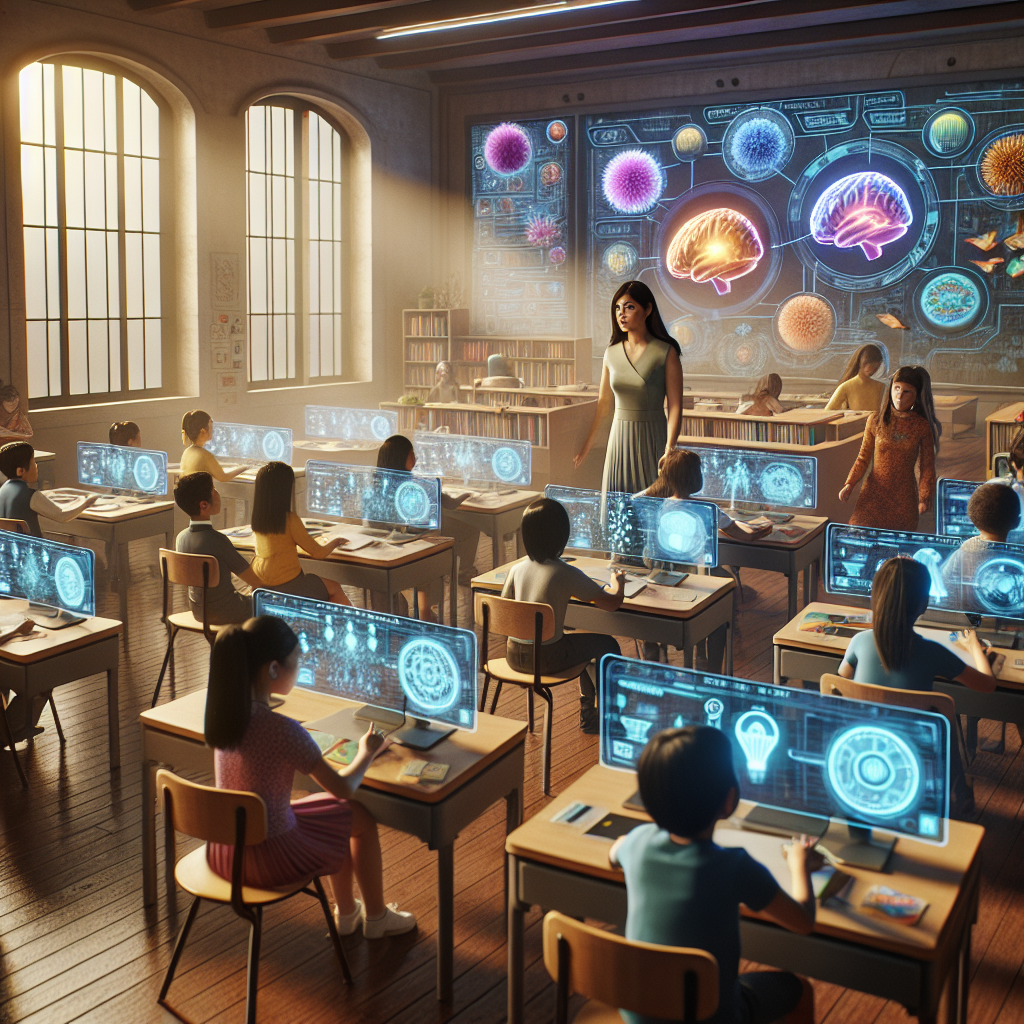Why AI and Neuroplasticity Are Set to Revolutionize Learning for Everyone
The Future of Learning: AI Neuroplasticity and Brain-Computer Interfaces
Introduction
In the rapidly evolving landscape of education, AI Neuroplasticity Brain-Computer Interfaces (BCIs) stand out as groundbreaking technological advancements poised to transform how we learn. These sophisticated systems leverage the brain’s inherent plasticity—its remarkable ability to adapt and reorganize by forming new neural connections. This adaptation is crucial in learning and acquiring new skills.
At the intersection of AI and BCIs lies a potent opportunity to enhance educational technologies significantly. By harnessing the synergy between brain-computer interfaces and AI, educational strategies can be tailored more precisely, leading to enriched learning experiences and outcomes.
Background
To grasp the transformative potential of AI neuroplasticity BCIs, it’s essential first to understand the concept of neuroplasticity. Often described as the brain’s capacity to \”rewire\” itself, neuroplasticity involves the brain’s ability to adapt in response to learning, experience, or injury. This adaptability is vital for growth and rehabilitation, offering pathways to relearning skills and recovering functionalities previously lost due to injury or disease.
Brain-Computer Interfaces are devices that facilitate direct communication between the brain and external systems. By interpreting neuronal activity, BCIs enable users to control computers or other devices using only their thoughts. This technology is enhanced by neuromorphic systems, which mimic the brain’s natural processing architecture, thereby seamlessly supporting neuroplasticity and dynamic learning environments.
The collective power of AI, BCIs, and neuromorphic systems is redefining learning technology, encouraging tailored educational approaches that adapt to individual learning styles and needs.
Current Trends
Since 2025, AI neuroplasticity BCIs have advanced remarkably, fostering innovations that enhance learning experiences through targeted neuroplasticity support. For instance, these technologies have been pivotal in creating personalized education programs that adapt in real-time to the learner’s neural responses, available via embedded feedback mechanisms.
Through BCIs, individuals can now receive immediate inputs that reinforce neural pathways, providing a 15% boost in performance, according to cited research from Hacker Noon. This kind of enhancement is not only beneficial for typical learners but also crucial for rehabilitation settings where individuals regain lost motor skills or cognitive functions.
Additionally, these advancements hold a profound impact on personalized education, moving away from traditional \”one-size-fits-all\” models to more sophisticated tailored experiences that adjust in response to students’ continuous feedback.
Insights from Related Research
Research continues to shed light on the promising capabilities of AI Neuroplasticity BCIs. For example, significant findings indicate that BCIs facilitate the reinforcement of neural pathways, offering substantial support for the brain’s dynamic adaptability. This technology is a beacon for fostering rehabilitation and enhancing cognitive capacities.
Articles from experts like Beth Rush highlight how BCIs, in combination with neuromorphic systems, bolster neuroplasticity more effectively than conventional therapy methods by enhancing the brain’s natural reorganization processes. This kind of reinforcement has been seen to foster significant improvements in learning efficiency and memory retention, thus providing pivotal insights into future educational innovations.
In the realm of educational technology, BCIs promise to revolutionize the personalization of learning experiences.
Future Forecast
The journey of AI in education is poised for a profound transformation with BCIs playing a centerpiece role. Looking forward, BCIs are expected to redefine the frameworks of educational methodologies by enhancing cognitive rehabilitation, supporting specialized learning needs, and improving overall educational outcomes.
For students with learning disabilities or neurological conditions, the integration of neuroplasticity support technologies can offer unprecedented customizability. The predictive abilities of these systems will likely revolutionize early intervention strategies and provide targeted learning pathways that align with each learner’s unique neurological blueprint.
Moreover, the long-term implications of this technological evolution promise a new era where the boundaries between biological and digital learning environments blur, opening up exhilarating new vistas for both educators and students alike.
Call to Action
Staying informed about the emerging landscape of AI Neuroplasticity BCIs is crucial for anyone invested in the future of education. As these technologies continue to advance, embracing them can lead to significant improvements in personal and institutional learning journeys. Practical steps include exploring current BCI applications, staying updated on research developments, and integrating AI-driven learning tools.
We invite you to share your thoughts on this exciting intersection of technology and education. Subscribe to our updates for the latest news on AI neuroplasticity BCIs and explore our related articles, such as those on Hacker Noon, to delve deeper into this transformative field.







